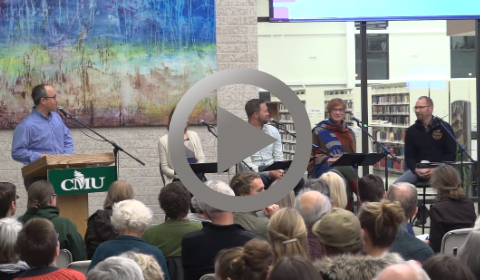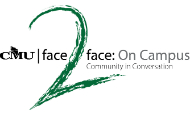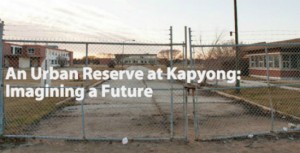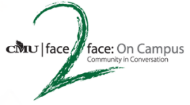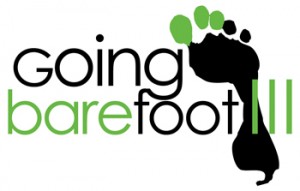David Balzer, Assistant Professor of Communications and Media, has taught at CMU since 2009.
What do you love about your work here?
I love it when I can mentor students to find their voice. I mean that almost literally, because when students first walk into the recording studio, it’s often quite an unnerving and anxious-filled experience for them to speak into a mic and literally discover the tone of their voice—and then on a deeper level, to find out who they are as creative communicators.
What are you researching and writing?
I’ve got two projects on the go. One of them is on the history of Mennonites and radio in Manitoba. I’m looking at two seminal radio programs that originated in the late 1940s and 50s: “The Gospel Light Hour” from the Mennonite Brethren community, and “Abundant Life” from what was then known as the Conference of Mennonites in Canada. I’m trying to understand the way these programs were shaped theologically as well as shaped from a communications theory perspective. My hunch is that exploring these two programs might tell us something about why we’re doing broadcasting the way we are now. The other thing I have on the go is my ongoing “Oh My God” project.
Where or how do students give you hope?
A student who is originally from Uganda walked into my office the other day and she said, “I have a dream.” The media in her country is governed by a very different system—one that doesn’t allow grassroots efforts to easily have a voice or access. She wants to take what she’s learning here at CMU and bring it back to her home country. She’s started to understand the power of media, and she wants to empower local writers and journalists to be able to tell their stories. That’s inspiring. That gives me hope.
What do you most long for in your work?
The thing I really long for is for students to recognize communication as a gift from God. We’ve been given this incredibly beautiful ability to communicate. That’s something that’s fragile, so how do we give that gift away in a way that is life-giving? I hope students will get that.
Do you have any interesting projects underway in the broader community or church?
I’ve developed a series of workshops that I present at schools and churches called, Social Media: The Good, the Bad, and the Beautiful. It tries to get participants thinking about how we use social media, and also presents some very direct how-tos they might use if their social media use is going to be beautiful in the end. I don’t go out there as an expert, but instead I tell people, I’m living the question just like they are.
What saying or motto inspires you?
I have a couple one-liners that I use to keep me focused. One that I like is, “Communicating for Life,” with a capital L. That in a nutshell encapsulates my desire to equip and help people, and also produce things that at the end of the day lead people to capital L Life with the One who created us.


